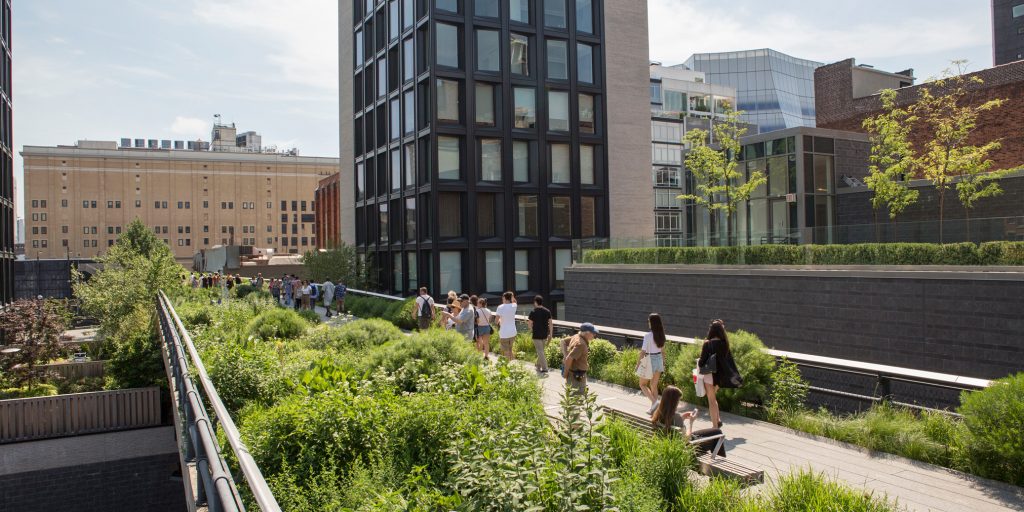Experts: Solid benefits and even some ROI result from greenway and trail projects
No question—trails, greenways, bike paths, nature walkways and similar infrastructure projects offer a good return on investment, says Chris Rhie, urban planner and associate principal at Buro Happold, Los Angeles. The firm is a multidisciplinary engineering consultancy, and a global practice of consulting engineers and advisers that offers its clients expertise in structural engineering, sustainability, lighting design, mobility and other areas.
“Yes, absolutely these projects offer positive return on investment (ROI), not only for the fiscal health of cities and counties, but also for the health and well-being of their residents, as well as the biodiversity of their flora and fauna,” Rhie tells American City & County. He says the key to maximizing these fiscal, social and environmental returns is embracing a multi-benefit approach to infrastructure investments.
He points to several research reports that link strong ROI to these kinds of projects. An analysis of the Northern Central Rail Trail in Maryland finds that the state received $303,000 per year in trail-related tax income while the trail’s management and maintenance costs were $192,000 per year.
“Trails and greenways can boost property values, local spending at businesses, influence employer location choices, reduce health care costs and revitalize depressed areas. They add transportation options and low-cost recreation. They also tend to increase tax revenues,” Rhie concludes.
He says, however, that some of these infrastructure projects can lead to unintended consequences. “These infrastructure investments have been so successful in some cases, such as the High Line in New York and the Atlanta BeltLine, that they have spurred a discourse on how to ensure equitable outcomes and avoid the problem of “green gentrification,” where existing residents and businesses are displaced due to the rising property values and rents induced by these projects.”
Rhie says his firm, Buro Happold, focuses on stranded assets. “These are large public infrastructure systems that have been underutilized, disinvested, or defunct due to the ways our urban systems function. These assets are prime opportunities for improved quality of life and delivery of services to the communities of our cities. From the High Line in New York City to the Erie Canal in Upstate New York to the Verdugo Wash in Glendale, Calif., Buro Happold’s public realm infrastructure projects prioritize the values of the 21st century city—sustainability, resilience, equity and access to public space for all.” Rhie’s conclusion: “The ROI is very good for these public works.”
“Trails, greenways, bike paths and similar projects are true public assets and hugely important for improving quality of life and creating better cities. They can also offer ROI benefits,” says Donald Clinton, a partner at Cooper Robertson. The firm practices award-winning architecture and urban design. He adds: “Rail trails are a classic example of how government investment in open-space infrastructure enhances land values for the entire community.”
Clinton cautions, “That said, ROI is a difficult and sometimes too narrow lens to apply in certain contexts.” He says that measuring ROI in complicated and dense urban environments such as New York City may be a challenge. “In these settings, there’s no question that the land value is enhanced, but it’s a harder question of who gets the biggest financial return, especially in the shorter term.”
Clinton explains that the best framework for evaluating the ROI of open space might be the concept conceived by urbanist Alex Garvin—“catalytic investment.” He says this idea tracks return in a broader way and on a larger timescale. “It’s about viewing infrastructure as a vehicle for catalyzing long-term economic development of an entire city or region. From this perspective, open space can have a hugely transformative impact on a city’s revitalization.”
Trail delivers ROI
The Silver Comet Trail, located 13 miles northwest of Atlanta, is free to use. The trail runs west through Cobb, Paulding, and Polk counties, and has an estimated 1.9 million users each year. Most trail users are bicyclists, but the quiet, non-motorized, paved trail is also for walkers, hikers, rollerbladers, horses and dog walkers, and is wheelchair accessible. The combined cost to construct all recommended Silver Comet trail connections within Georgia is estimated to total $59 million.
According to an economic impact analysis and planning study summary, for every $1 spent on the Silver Comet Trail expansion, Georgians gain an estimated $4.64 in direct and indirect economic benefits. “This translates to an over 400 percent return on investment for local communities, the region and the state,” according to authors of the study.
Michael Keating is senior editor for American City & County. His first look at ROI and greenway and trail projects can be read here. Contact him at [email protected].




















